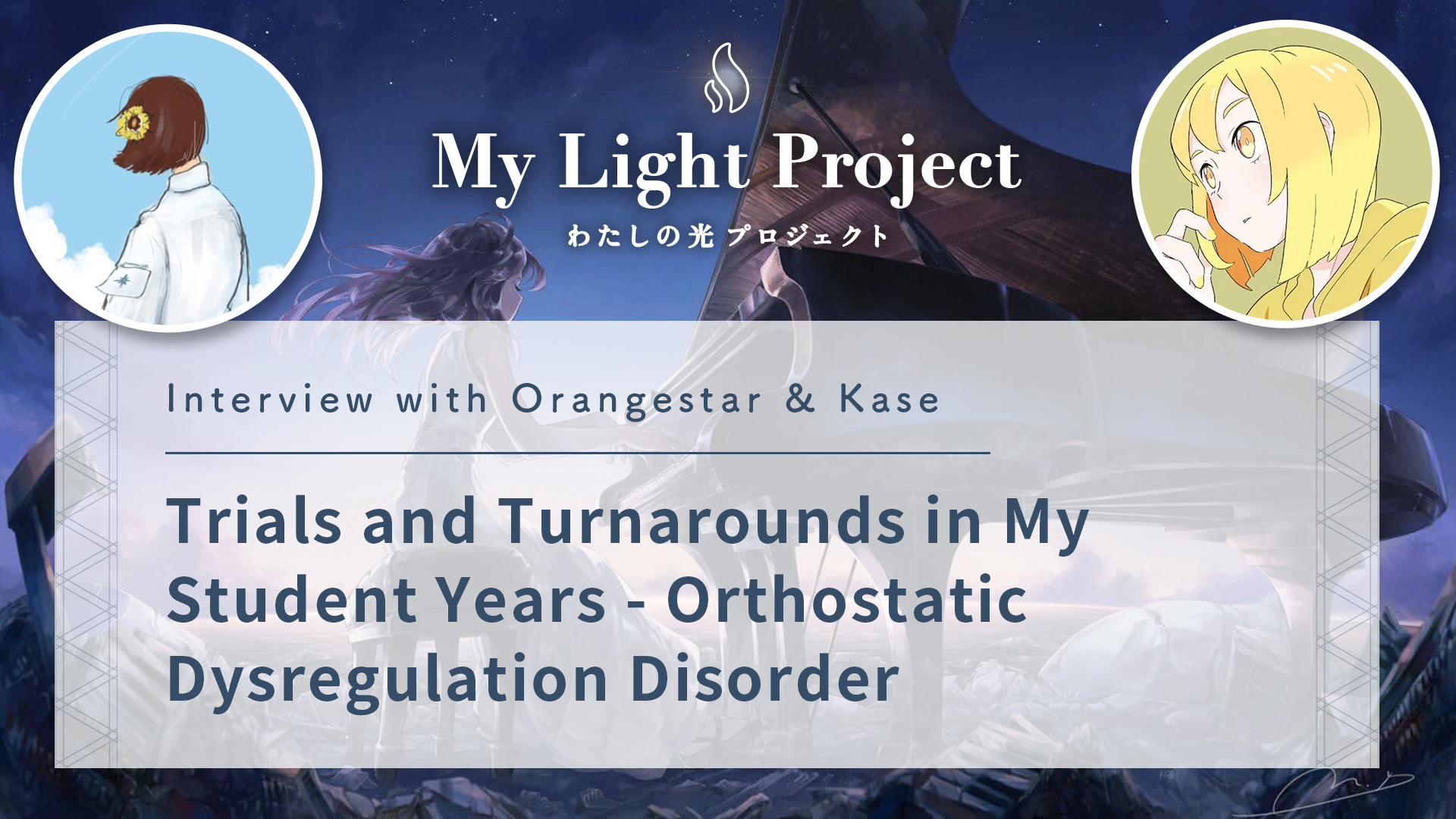
Kase’s Junior High School Years
——How were your junior high school years?
Kase (K): Right after I entered junior high school, I was still the same, serving on the class council and attending music classes. For club activities, I was in the basketball club. I had to practice in the morning and after school, but it wasn’t enough, so I practiced even after going home. However, in November of my first year of junior high school, I developed a disease called orthostatic dysregulation and was unable to do all of my activities.
——Was it the same with music and basketball?
K: I had to quit basketball because of my physical condition, but I decided to quit music rather than continue halfway. I was a perfectionist at that time.
——I think it’s not so much that you stopped because you were in bad shape, but because you couldn’t do it as hard as you had in the past?
K: It goes both ways. I want to do it, but my physical condition won’t keep up, so I say, “Forget it!” I’m done! I was desperate.
——I heard that you had that disease and were hospitalized.
K: I fell asleep all the time when the pressure dropped, and on typhoons or rainy days I would sleep about 20 hours a day, so often I would go to bed at night and wake up the next day and the day would be over. During that time, no matter how much my mother tried to wake me up, I was unconscious, so I was admitted to the hospital for a checkup because I thought I might have a sleep disorder as well as an orthostatic adjustment disorder.
——It’s hard to go about your daily life when you sleep that much. How did you spend your time while in the hospital?
K: I had so much time during that hospital stay that I tried to imagine and draw illustrations for the novel I had taken with me. That is how I started painting. Also, while I was in the hospital, there was a picture that I fell in love with at first sight, and I was shocked to find out that it was drawn by a girl my age, so I decided to try my hand at drawing. Also, there was a Bible in my room, so I read it during that hospitalization.
——That’s what inspired you to paint. What did you think when you first read the Bible?
K: I honestly didn’t understand it at the time. But I remember I started reading in the hope that it might contain answers as to why God did this to my body and why I couldn’t go to school. It was spring break of my third year of junior high school when I was hospitalized for this examination, and my personality changed drastically between my first and third year.
I used to like public speaking so much, but I became so introverted that I couldn’t make eye contact even in one-on-one situations.
——I see… How was your school life?
K: I would sleep 20 hours a day some days and was almost bedridden during the rainy season and typhoons. Headaches and taste disorders were especially bad. So on days when I was feeling well, I would go to school, even if only for a short while.
When I was in junior high school, I was blessed with people around me, and my teachers and friends were very understanding. However, since I would go to school when I was feeling well, people would sometimes say, “You’re fine as usual.” Now that I think about it, maybe those kids were just wondering and didn’t take offense.
——Even a casual word can be curious in such a situation. How long did your illness last?
K: My major symptoms lasted until I was about 18 years old. I really wanted to attend a full-time high school, so I managed to get in, but at the end of my first year of high school I felt I could no longer continue due to my condition, so I started studying and took the high school equivalency exam while still in school.
The symptoms themselves are still there, but they are so much better than they were then. Now I just think that I have this kind of constitution and I’ve been able to separate it from the rest of my life. Besides, I don’t think I would be painting now if I hadn’t gotten sick, and now I can think that it wasn’t all bad.
——What kind of paintings were you doing at that time?
K: Hmmm. I was drawing what I was thinking at that time. So many of the pictures were stinging or sad.
——Do you still have any paintings from those days? If so, would you be able to show them to us?
K: Oh, I can’t show them. It’s still there, but I still don’t think it’s a pleasant picture for people to look at.
——That’s right. Many things were swirling around in your mind, weren’t they? How did you change from such sad pictures to the ones we see today?
K: The summer after I quit high school, I had a private exhibition at a local café, which was a good opportunity for me.
I had already decided to have a private exhibition before quitting high school, so I painted to drown out the anxiety of having quit. At that time, I became aware for the first time that my paintings were not just for my own satisfaction, but for others to see. Also, perhaps because I no longer had to compare myself with others after quitting school, I felt more relaxed, and I naturally became more gentle with colors and motifs.
——That’s amazing! What is your greatest feeling after those six years?
K: It means that there is no need to compare yourself with others. I also don’t think there’s any need to compare yourself to the person you used to be and the person you are now and get depressed about it. What I can’t do, I can’t help! One after another! If I can think, “What I can’t do, I can’t help it,” then there will be room to take in new things, so I hope I can be free to move on to the next thing without getting attached to that place. I hope so.
Orangestar’s High School Years – Meeting M.B.
——Next, can I ask you about when you started composing for Orangestar?
Orangestar (O): Yes, I started composing music when I graduated from junior high school. I continued to play volleyball in high school, but I wanted to try something new.
——Did you go to high school in the U.S.?
O: I was in a Japanese high school until my freshman year and went there from my sophomore year.
——Did you meet M.B. before you went to the U.S.?
O: That’s right. M.B.’s brother introduced me to M.B. in the summer of the year I started composing music, and we started working together, but we actually met for the first time the following year when I went back to Japan once for a summer vacation from the U.S.
——Has anything changed for you since you started working with M.B.?
O: I think I mentioned in another interview with M.B. that he was a very passionate person, and that he had always said that he wanted to give hope and have a positive impact on the world through his works. I think I was pulled in part by that.
——What a wonderful vision that is!
O: That’s right. At the time, we were still completely unknown to each other, but I had hoped that we would eventually become like that.
——I feel that many people are actually encouraged by your works. Do you usually receive such messages?
O: I don’t usually attend many events, but when I do, I sometimes receive letters. When I read those letters, I feel really strange. There are people who tell me that they were encouraged by my music. But I am very happy when I hear that.
——Kase-san is one of them, isn’t he?
K: That’s right. When I was mentally struggling after my illness, Orangestar’s music was the thing that gave me the most hope. When we first met, I wrote a letter to him, but I couldn’t give it to him.
——I got to see you! Like that?
K: I brought it with me. I brought it with me, but I was too nervous to give it to him, so I mailed it to him later.
——Ha ha!
(To be continued next time)
Next time, we will interview Orangestar about their life in the U.S. and the two years they were inactive!
